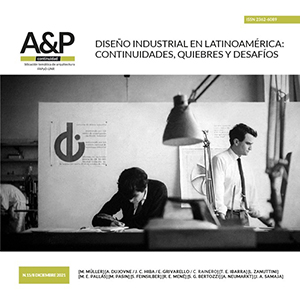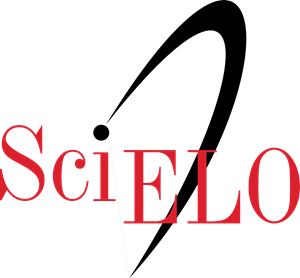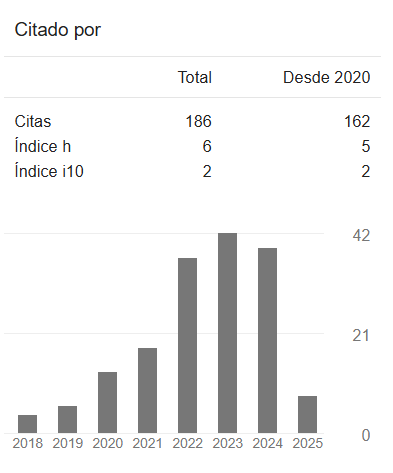¿Biología como diseño?
La biología sintética y la historia de ascenso de la zoepolítica
DOI:
https://doi.org/10.35305/23626097v8i15.358Descargas
Métricas
Citas
Carlson, R. H. (2010). Biology is Technology. The Promise, Peril, and New Business of Engineering Life. Massachusetts, Estados Unidos: Harvard University Press.
Church, G. M. y Regis, E. (2012). How Synthetic Biology Will Reinvent Nature and Ourselves. New York, Estados Unidos: Basic Books.
Cooper, M. (2008). Life as Surplus. Biotechnology and Capitalism in the Neoliberal Era. Seattle, Estados Unidos: University of Washington Press.
Doudna, J. A. y Charpentier, E. (2014). The New Frontier of Genome Engineering with CRISPR-Cas9. Science, 346 (6213), 1258096-1-1258096-9.
Doudna, J. A. y Sternberg, S. H. (2017). A Crack in Creation. The New Power to Control Evolution. Londres, Inglaterra: Houghton Mifflin Harcourt.
Drexler, E. (1990). Engines of Creation. The Coming Era of Nanotechnology. New York, Estados Unidos: Doubleday.
Erdur, O. (2018). Die epistemologischen Jahre. Philosophie und Biologie in Frankreich, 1960-1980. Zúrich, Suiza: Chronos Verlag.
Fong, S. S. (2014). Computational Approaches to Metabolic Engineering Utilizing Systems Biology and Synthetic Biology. Computational and Structural Biotechnology Journal, 11 (18), 28-34.
Foucault, M. (1983). Der Wille zum Wissen. Fráncfort, Alemania: Suhrkamp Verlag.
Foucault, M. (1999). Botschaften der Macht. Stuttgart, Alemania: Deutsche Verlags-Anstalt.
Foucault, M. (2002). Wachsen und vermehren. En Dits et Ecrits, t. II: 1970-1975. Fráncfort, Alemania: Suhrkamp Verlag AG.
Foucault, M. (2006). Sicherheit, Territorium, Bevölkerung. Geschichte der Gouvernementalität I. Vorlesungen am Collège de France 1977/1978. Fráncfort, Alemania: Suhrkamp.
Friedrich, A., Löffler, P., Schrape, N. y Sprenger, F. (2018). Ökologien der Erde. Zur Wissensgeschichte und Aktualität der Gaia-Hypothese. Luneburgo, Alemania: Meson press.
Grote, M. (2019). Membranes to Molecular Machines. Active Matter and the Remaking of Life. Chicago, Estados Unidos: University of Chicago Press.
Haraway, D. J. (1995). Die Neuerfindung der Natur. Primaten, Cyborgs und Frauen, ed. Carmen Hammer e Immanuel Stiess, trad. Fred Wolf. Fráncfort, Alemania: Campus Verlag.
Haraway, D. J. (2018). Unruhig bleiben. Die Verwandtschaft der Arten im Chthuluzän, trad. Karin Harraser. Fráncfort, Alemania: Campus Verlag.
Hörl, E. (2017). "Technisches Leben": Simondonds Denken des Lebendigen und die allgemeine Ökologie. En Black Box Leben, ed. Maria Muhle y Christiane Voss, 239-266.
Jacob, F. (2002). Die Logik des Lebenden, eine Geschichte der Vererbung. Berlín, Alemania: FISCHER Taschenbuch
Kay, L. E. (2005). Das Buch des Lebens. Wer schrieb den genetischen Code? Fráncfort, Alemania: Suhrkamp.
Kittler, F. A. (1993). Geschichte der Kommunikationsmedien. In J. H. (eds.), Raum und Verfahren. Fráncfort, Alemania: Stroemfeld.
Kyrou, K., Hammond, A., Galizi, R., Kranjc, N., Burt, A., Beaghton A., y Crisanti A. (2018). A CRISPR-Cas9 Gene Drive Targeting Doublesex Causes Complete Population Suppression in Caged Anopheles gambiae mosquitoes. Nature Biotechnology, 36 (11), 1062-1066.
Lucci, A. (2014). Oikos und Zoé. Biopolitik, Zooökonomie, Askese. En Bonds. Schuld, Schulden und andere Verbindlichkeiten (pp. 403-420). Múnich, Alemania: Fink Wilhelm GmbH + Co.KG.
Monod, J. (1982). Zufall und Notwendigkeit. Philosophische Fragen der modernen Biologie. Múnich, Alemania: Piper Verlag (Texto original de 1970)
Muhle, M. (2013). Eine Genealogie der Biopolitik. Zum Begriff des Lebens bei Foucault und Canguilhem. Múnich, Alemania: Fink Wilhelm GmbH + Co.KG.
Müller, M. (2018). Nach dem metabolischen Bruch. Texte zur Kunst, 110, 154-159.
Müller, M. (2018). Zoë als Téchne. Zum Paradox möglicher Menschen in der synthetischen Biologie. En Potential regieren. Zur Genealogie des möglichen Menschen. Paderborn, Alemania: Verlag Wilhelm Fink.
Nancy, J. L. (2002). Die Erschaffung der Welt oder die Globalisierung. Berlín, Alemania: diaphanes.
Neyrat, F. (2019). The Unconstructable Earth. An Ecology of Separation. New York, Estados Unidos: Fordham University Press.
Povinelli, E. A. (2016). Geontologies. A Requiem to Late Liberalism. Durham, Estados Unidos: Duke University Press Books.
Prasanta Dash K. (2019). Sequential LASER ART and CRISPR Treatments Eliminate HIV-1 in a Subset of Infected Humanized Mice. Nature Communications, 10(1), 1-20.
Rabinow, P.; Bennett, G. (2012). Designing Human Practices. An Experiment with Synthetic Biology. Chicago, Estados Unidos: University of Chicago Press.
Roosth, S. (2017). Synthetic. How Life Got Made. Chicago, Estados Unidos: University of Chicago Pres
Rose, N. (2006). The Politics of Life Itself. Biomedicine, Power, and Subjectivity in the Twenty-First Century. Princeton, Estados Unidos: Princeton University Press.
Scudellari, M. (2019). Self-Destructing Mosquitoes and Sterilized Rodents. The Promise of Gene Drives. Nature, 571 (7764), 160-162.
Schrödinger, E. (1989). Was ist Leben? Die lebende Zelle mit den Augen des Physikers betrachtet. Múnich, Alemania: Piper Taschenbuch.
Schäffner, W. (2018). Active Matter. En 23 Manifest zu Bildakt und Verkörperung. Berlin, Alemania: Gruyter.
Schäffner, W. (2019). Materie und Information. En Materialforschung. Impulsgeber Natur. Innovationspotenzial biologisch inspirierter Materialien und Werkstoffe. Múnich, Alemania: utzverlag.
Shapiro, B. (2015). Mammoth 2.0: Will Genome Engineering Resurrect Extinct Species? Genome Biology, 16 (1), 1-3.
Smith, C. J. (2019). Enabling large-scale genome editing by reducing DNA nicking. En Nucleic Acids Research, 48 (9), 5183–5195.
Sprenger, F. (2019). Epistemologien des Umgebens. Zur Geschichte, Ökologie und Biopolitik künstlicher environments. Bielefeld, Alemania: Edition Medienwissenschaft.
Thacker, E. (2006). The Global Genome. Biotechnology, Politics, and Culture. Massachusetts, Estados Unidos: The MIT Press.
Venter, C. J. (2010). Creation of a Bacterial Cell Controlled by a Chemically Synthesized Genome. Science, 329 (5987), 52-56.
Weigel, S. (2006). Die "innere Spannung im alphanumerischen Code" (Flusser). Buchstabe und Zahl in grammatologischer und wissenschaftsgeschichtlicher Perspektive. Colonia, Alemania: Walther König.

Publicado
Cómo citar
Número
Sección
Licencia
Derechos de autor 2021 A&P Continuidad

Esta obra está bajo una licencia internacional Creative Commons Atribución-NoComercial-CompartirIgual 4.0.
Política de acceso abierto
A&P Continuidad es una publicación de acceso abierto y sin ánimo de lucro. A partir de la Declaración de México la revista se distribuye bajo una Licencia Creative Commons CC BY-NC-SA de Atribución – NoComercial - CompartirIgual 4.0 Internacional: “No se permite un uso comercial de la obra original ni de las posibles obras derivadas, la distribución de las cuales se debe hacer con una licencia igual a la que regula la obra original. Esta licencia no es una licencia libre."
A&P Continuidad autoriza la reproducción parcial o total de los textos y gráficos siempre que se cite la procedencia. Los criterios expuestos en los artículos son de exclusiva responsabilidad de sus autores y no reflejan necesariamente la opinión del Comité Editorial ni de la Dirección. Los derechos de los artículos publicados pertenecen a sus autores o editoriales.
Cesión de derechos
La aceptación de un artículo para ser publicado implica la transferencia de derechos del autor a la revista. Los autores conservan el derecho de usar el material en libros o publicaciones futuras y de aprobar o vetar la republicación de su trabajo, así como los derechos derivados de patentes u otros. El formulario de cesión de derechos puede descargarse aquí.





























 Esta obra está bajo una
Esta obra está bajo una 

